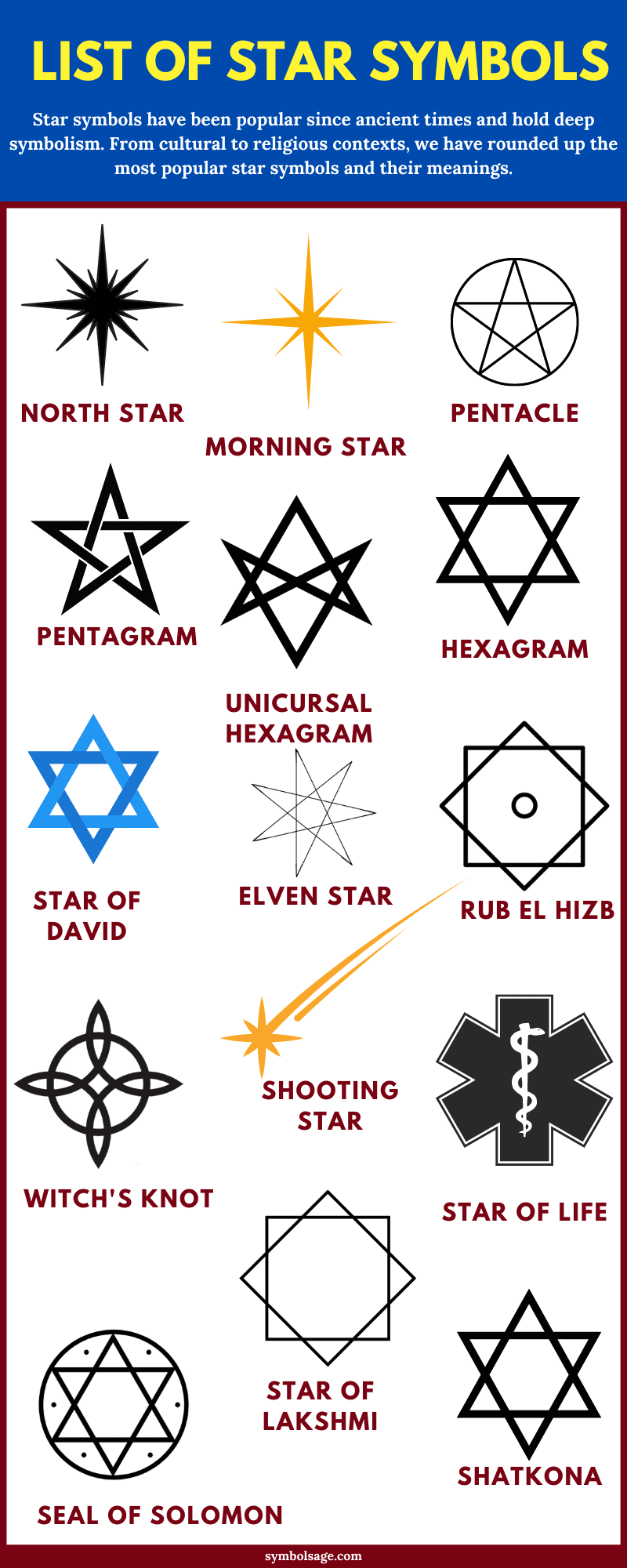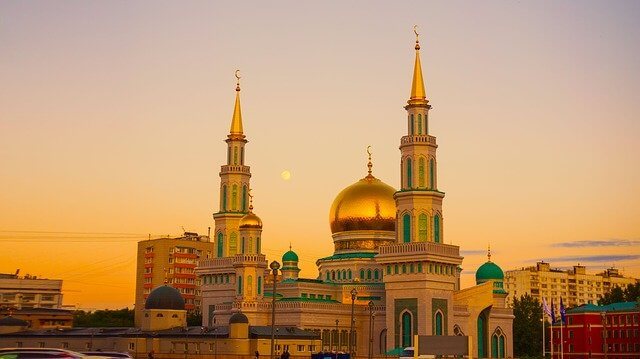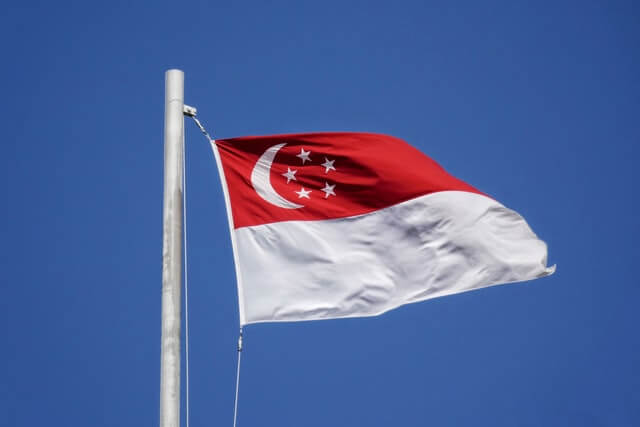
Table of Contents
Although Islam has no official symbol, the star and crescent seems to be the most accepted symbol of Islam. It’s featured on the doors of mosques, decorative arts, and on flags of various Islamic countries. However, the star and crescent symbol predates the Islamic faith. Here’s a look at the history of the Islamic symbol and its meanings.

Meaning of the Islamic Symbol
The star and crescent symbol has been strongly associated with Islam, but it doesn’t have any spiritual connection to the faith. While Muslims don’t use it when worshipping, it has become a form of identification for the faith. The symbol was only used as a counter-emblem to the Christian cross during the Crusades and eventually became an accepted symbol. Some Muslim scholars even say that the symbol was pagan in origin and using it in worship constitutes idolatry.
The star and crescent symbol doesn’t hold spiritual meanings, but it’s associated with certain Muslim traditions and festivals. The crescent moon marks the start of a new month in the Islamic calendar and indicates the proper days of Muslim holidays such as Ramadan, a period of prayer and fasting. However, many believers refuse to use the symbol, as Islam has historically had no symbol.

The heritage of the star and crescent symbol is based on political and cultural expressions, and not on the faith of Islam itself.
The Quran includes a chapter on The Moon and The Star, which describes the crescent moon as a harbinger of the Day of Judgment, and the star as a god worshipped by pagans. The religious text also mentions that God made the sun and the moon as a means of reckoning time. However, these don’t contribute to the spiritual meaning of the symbol.
Another interpretation of the five-pointed star is that it’s thought to symbolize the five pillars of Islam, but this is just an opinion of some observers. This likely stemmed from the Ottoman Turks when they used the symbol on their flag, but the five-pointed star wasn’t standard and still isn’t standard on the flags of Muslim countries today.
In political and secular use, such as coinage, flags, and coat of arms, the five point star symbolizes light and knowledge, while the crescent represents progress. It’s also said that the symbol represents divinity, sovereignty and victory.
History of the Star and Crescent Symbol
The exact origin of the star and crescent symbol are debated by scholars, but it’s widely accepted that it first became associated with Islam during the Ottoman Empire.
- Islamic Architecture in the Middle Ages
During the early Middle Ages, the star and crescent symbol wasn’t found on Islamic architecture and art. Even during the Prophet Muhammad’s life, around 570 to 632 CE, it wasn’t used on Islamic armies and caravan flags, as rulers only used solid-colored flags in white, black, or green for identification purposes. It wasn’t also evident during the Umayyad dynasty, when Islamic monuments were built throughout the Middle East.
- The Byzantine Empire and Its Conquerors
One of the leading civilizations in the world, the Byzantine Empire began as the city of Byzantium. Since it was an ancient Greek colony, Byzantium recognized several Greek gods and goddesses, including Hecate the goddess of the moon. As such, the city adopted the crescent moon as its symbol.
By 330 CE, Byzantium was chosen by Roman Emperor Constantine the Great to be the site of a New Rome, and it became known as Constantinople. A star, a symbol dedicated to Virgin Mary, was added to the crescent symbol after the emperor made Christianity the official religion of the Roman Empire.
In 1453, the Ottoman Empire invaded Constantinople, and adopted the star and crescent symbol associated with the city after its capture. The founder of the empire, Osman, regarded the crescent moon as a good omen, so he continued using it as a symbol of his dynasty.
- The Rise of the Ottoman Empire and Late Crusades
During the Ottoman-Hungarian Wars and late Crusades, Islamic armies used the star and crescent symbol as a political and nationalistic emblem, while Christian armies used the cross symbol. After centuries of battle with Europe, the symbol became linked with the faith of Islam as a whole. Nowadays, the star and crescent symbol is seen on flags of various Muslim countries.
The Star and Crescent Symbol in Ancient Cultures

Celestial phenomena have inspired spiritual symbolism around the world. The star and crescent symbol is thought to have astronomical origins. It’s common for political groups to adopt ancient symbols to unite different religious beliefs.
- In Sumerian Culture
The tribal societies in Central Asia and Siberia heavily used the star and crescent as their symbols for worshipping the sun, moon, and sky gods. These societies predated Islam by thousands of years, but many historians believe that the Sumerians were the ancestors of the Turkic peoples, because their cultures are linguistically related. Ancient rock paintings suggest that the star and crescent symbol was inspired by the moon and planet Venus, one of the brightest objects in the night sky.
- In Greek and Roman Culture
Around 341 BCE, the star and crescent symbol was featured on Byzantium coins, and is thought to symbolize Hecate, one of patron goddesses of Byzantium, which is also the present-day Istanbul. According to a legend, Hecate intervened when Macedonians attacked Byzantium, by revealing the crescent moon to expose enemies. Eventually, the crescent moon was adopted to symbolize the city.
The Star and Crescent in Modern Times
The crescent moon has decorated the top of mosques, while the star and crescent symbol has been featured on flags of different Islamic states and republics, such as Pakistan and Mauritania. It can also be seen on the flags of Algeria, Malaysia, Libya, Tunisia and Azerbaijan, countries whose official religion is Islam.

However, we shouldn’t assume that all countries with star and crescent on their flags have connections to Islam. For instance, Singapore’s crescent moon symbolizes a young nation on the ascendant, while the stars represent its ideals, such as peace, justice, democracy, equality and progress.
Even if the star and crescent symbol has no direct connection to Islamic faith, it remains the prominent symbol of Islam. Sometimes, it’s even featured on Muslim establishments and business logos. The United States military also allows the symbol to be used on Muslim tombstones.
In Brief
The star and crescent symbol can be traced back to the Ottoman Empire, when it was used on the falg of the capital of Constantinople. Eventually, it became synonymous with Islam and has been used on flags of many Muslim countries. However, not all faiths use symbols to represent their beliefs, and while the Islamic faith doesn’t subscribe to the use of symbols, the star and crescent remains their most well-known unofficial symbol.








